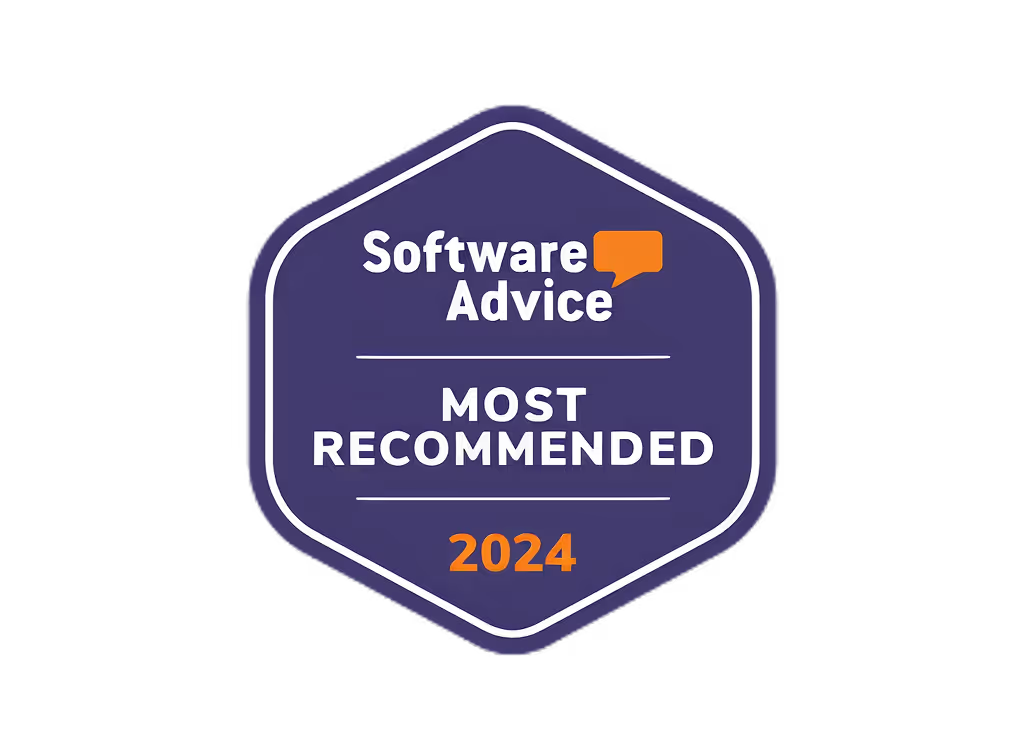10 Video Monetization Strategies for Agencies 2024

In 2024, agencies must prioritize video monetization to sustain revenue growth. Here are the key strategies to generate revenue from video content:
- Subscription-Based Access: Offer exclusive video content for a recurring subscription fee, providing a predictable income stream.
- Advertising-Supported Content (AVOD): Display ads before, during, or after videos to earn ad revenue from a growing $23.8 billion market by 2025.
- Brand Sponsorships and Partnerships: Partner with brands to create sponsored video content, leveraging the projected $24.1 billion influencer marketing industry by 2025.
- Pay-Per-View Events: Charge viewers for access to live events or exclusive video content, tapping into a market expected to reach $12.8 billion by 2025.
- Affiliate Marketing and Product Placement: Earn commissions by promoting products or services through affiliate links and product placements in videos.
- Exclusive Content Behind Paywalls: Restrict access to premium video content, making it available only to viewers who pay subscription fees, one-time payments, or rentals.
- Interactive Live Streaming: Engage with viewers in real-time through live Q&A sessions, polls, and virtual gifting during live video streams.
- Dynamic Ad Insertion: Insert targeted ads into video content in real-time, enhancing viewer experience and increasing ad revenue.
- E-commerce and Merchandise Sales: Enable viewers to purchase products directly from shoppable videos or sell branded merchandise.
- Data-Driven Personalization and Targeting: Use viewer data and analytics to create tailored video experiences, increasing engagement and conversion rates for targeted ads, sponsored content, and affiliate marketing.
By implementing these strategies, agencies can unlock new revenue streams, enhance audience engagement, and drive business success in the digital era.
Related video from YouTube
Choosing a Monetization Strategy
Before we dive into the strategies, let's discuss how to select the best approach for your agency. This involves considering several key factors.
Content Analysis
Content TypeValue ProvidedExclusivityInformativeResolves an issueReplicable or replaceableEducationalFulfills a needUnique or hard to replicateEntertainingEvokes emotionsHigh or low exclusivity
Audience Analysis
AttributeDescriptionAgeTarget age rangeGenderTarget genderLocationTarget region or countryInterestsHobbies or passionsContent consumption behaviorFrequency, duration, device, platformEngagement with your brandAwareness, trust, loyalty, recommendations
Market Analysis
Competitor TypeMonetization MethodsOpportunities and ThreatsDirect competitorsStrategies employedTrends, demands, regulationsIndirect competitorsImplementationOpportunities and threats
Resource Analysis
ResourceDescriptionHuman resourcesTeam and skillsTechnical resourcesTools and infrastructureFinancial resourcesBudget and funding
By carefully considering these factors, you'll be able to choose a video monetization strategy that aligns with your agency's goals and objectives, ultimately driving revenue and growth for your clients.
1. Subscription-Based Access
Subscription-based access, also known as SVOD (Subscription Video on Demand), allows viewers to pay a recurring fee for unlimited access to a library of video content. This model is commonly used by streaming services like Netflix, Hulu, and Disney+.
Revenue Potential
The revenue potential of subscription-based access is substantial, providing a predictable and recurring stream of income. According to a report, the SVOD market is expected to grow to 1.2 billion subscribers by 2026.
Revenue PotentialDescriptionPredictable incomeRecurring fee from subscribersGrowing marketExpected to reach 1.2 billion subscribers by 2026
Audience Engagement
Subscription-based access encourages audience engagement, as viewers are more invested in the content they are paying for. This leads to higher watch times, increased loyalty, and positive word-of-mouth.
BenefitsDescriptionHigher watch timesViewers are more invested in contentIncreased loyaltySubscribers are more likely to returnPositive word-of-mouthSubscribers recommend content to others
Production and Operational Costs
While the revenue potential is high, production and operational costs are significant. Agencies need to invest in high-quality content creation, infrastructure, and maintenance to ensure a seamless user experience.
CostsDescriptionContent creationHigh-quality video content productionInfrastructureRobust and scalable infrastructure developmentMaintenanceOngoing maintenance and updates
Market Competition
The SVOD market is highly competitive, with numerous players vying for attention. Agencies need to differentiate themselves through unique content offerings, competitive pricing, and exceptional user experiences.
Competitive FactorsDescriptionUnique contentExclusive content offeringsCompetitive pricingAttractive pricing strategiesUser experienceExceptional user experience and features
Technical Implementation Complexity
Implementing a subscription-based access model requires significant technical expertise. Agencies need to develop a robust and scalable infrastructure, integrate payment gateways, and ensure seamless content delivery.
Technical RequirementsDescriptionInfrastructure developmentRobust and scalable infrastructurePayment gateway integrationSecure payment processingContent deliverySeamless content delivery and streaming
2. Advertising-Supported Content (AVOD)

Advertising-Supported Content (AVOD) is a popular monetization strategy for agencies. By partnering with brands and advertisers, agencies can generate revenue through ads displayed before, during, or after video content.
Revenue Potential
AVOD offers a significant revenue potential for agencies. According to a report, the AVOD market is expected to reach $23.8 billion by 2025.
Revenue SourceDescriptionAd revenueAgencies earn money from ads displayedGrowing marketExpected to reach $23.8 billion by 2025
Audience Engagement
AVOD encourages audience engagement, as viewers are more likely to watch ads in exchange for free content. This leads to higher watch times, increased loyalty, and positive word-of-mouth.
BenefitsDescriptionHigher watch timesViewers watch ads in exchange for free contentIncreased loyaltyViewers are more likely to return to free contentPositive word-of-mouthViewers recommend free content to others
Production and Operational Costs
The production and operational costs for AVOD are relatively low. Agencies only need to invest in content creation and infrastructure development.
CostsDescriptionContent creationHigh-quality video content productionInfrastructure developmentRobust and scalable infrastructure
Market Competition
The AVOD market is highly competitive, with numerous players vying for attention. Agencies need to differentiate themselves through unique content offerings, competitive pricing, and exceptional user experiences.
Competitive FactorsDescriptionUnique contentExclusive content offeringsCompetitive pricingAttractive pricing strategiesUser experienceExceptional user experience and features
Technical Implementation Complexity
Implementing an AVOD model requires moderate technical expertise. Agencies need to develop a robust and scalable infrastructure, integrate ad servers, and ensure seamless content delivery.
Technical RequirementsDescriptionInfrastructure developmentRobust and scalable infrastructureAd server integrationSecure ad serving and trackingContent deliverySeamless content delivery and streaming
3. Brand Sponsorships and Partnerships
Brand sponsorships and partnerships are a lucrative way for agencies to monetize their video content. By collaborating with brands, agencies can create sponsored content that resonates with their target audience, increasing brand awareness and driving revenue.
Revenue Potential
Brand sponsorships offer a significant revenue potential for agencies. According to industry reports, the influencer marketing industry is projected to reach $24.1 billion by 2025.
Revenue SourceDescriptionSponsored contentAgencies earn money from creating sponsored contentGrowing marketProjected to reach $24.1 billion by 2025
Audience Engagement
Brand sponsorships encourage audience engagement, as viewers are more likely to interact with sponsored content that resonates with their interests.
BenefitsDescriptionHigher watch timesViewers engage with sponsored contentIncreased loyaltyViewers are more likely to return to sponsored contentPositive word-of-mouthViewers recommend sponsored content to others
Production and Operational Costs
The production and operational costs for brand sponsorships are relatively low.
CostsDescriptionContent creationHigh-quality sponsored content productionTalent feesFees for partnering with influencers or talentInfrastructure developmentRobust and scalable infrastructure
By leveraging brand sponsorships and partnerships, agencies can create engaging content, drive revenue, and build strong relationships with brands.
4. Pay-Per-View Events
Pay-per-view (PPV) events offer a lucrative way for agencies to monetize their video content. This model is particularly effective for live events, such as concerts, sports matches, or conferences, where viewers are willing to pay for access to premium content.
Revenue Potential
PPV events have significant revenue potential. Agencies can set a price for each event and earn money from every viewer who purchases access.
Revenue SourceDescriptionEvent salesAgencies earn money from selling access to PPV eventsGrowing marketProjected to reach $12.8 billion by 2025
Audience Engagement
PPV events encourage audience engagement, as viewers are more likely to participate in live events and interact with the content.
BenefitsDescriptionHigher engagementViewers participate in live events and interact with contentIncreased loyaltyViewers are more likely to return to PPV eventsPositive word-of-mouthViewers recommend PPV events to others
Production and Operational Costs
The production and operational costs for PPV events are relatively high.
CostsDescriptionInfrastructure developmentRobust and scalable infrastructure for live eventsTalent feesFees for partnering with influencers or talentContent creationHigh-quality content production for PPV events
By leveraging PPV events, agencies can create exclusive content, drive revenue, and build strong relationships with their audience.
sbb-itb-606b7a1
5. Affiliate Marketing and Product Placement
Affiliate marketing and product placement are effective ways for agencies to earn money from their video content. This strategy involves partnering with brands to promote their products or services in videos, earning a commission for each sale made through the affiliate link.
Revenue Potential
Affiliate marketing and product placement offer a significant revenue potential. Agencies can earn money from every sale made through their unique affiliate link.
Revenue SourceDescriptionCommission-based salesAgencies earn money from sales made through their affiliate linkGrowing marketProjected to reach $12.8 billion by 2025
Audience Engagement
Affiliate marketing and product placement encourage audience engagement, as viewers are more likely to participate in interactive content and interact with the products or services being promoted.
BenefitsDescriptionIncreased engagementViewers participate in interactive content and interact with products or servicesPositive word-of-mouthViewers recommend products or services to others
Production and Operational Costs
The production and operational costs for affiliate marketing and product placement are relatively low, as agencies can partner with brands to promote their products or services without incurring significant production costs.
CostsDescriptionContent creationAgencies create content featuring products or servicesBrand partnershipsAgencies partner with brands to promote their products or services
By leveraging affiliate marketing and product placement, agencies can create engaging content, drive revenue, and build strong relationships with their audience.
6. Exclusive Content Behind Paywalls
Exclusive content behind paywalls is a video monetization strategy where agencies restrict access to premium content, making it only available to viewers who are willing to pay for it. This strategy is effective for agencies with high-quality, engaging, and valuable content that viewers are willing to pay for.
Revenue Potential
Exclusive content behind paywalls offers a significant revenue potential. Agencies can earn money from:
Revenue SourceDescriptionSubscription feesRecurring revenue from subscription feesOne-time paymentsEarnings from one-time payments for access to exclusive contentRentalsEarnings from rentals of exclusive content
Audience Engagement
Exclusive content behind paywalls encourages audience engagement, as viewers are more likely to:
BenefitsDescriptionParticipate in interactive contentEngage with products or services being promotedRecommend exclusive contentShare with others
Production and Operational Costs
The production and operational costs for exclusive content behind paywalls are relatively high, as agencies need to:
CostsDescriptionCreate high-quality contentInvest in creating engaging and valuable contentDevelop a platformInvest in developing a platform to host exclusive contentMarket and promoteInvest in marketing and promoting exclusive content
By leveraging exclusive content behind paywalls, agencies can create a new revenue stream, increase audience engagement, and build a loyal audience. However, it requires investing in creating high-quality content and developing a platform to host it.
7. Interactive Live Streaming
Interactive live streaming is a video monetization strategy that allows agencies to engage with their audience in real-time, creating a more immersive experience. This strategy involves live streaming content that encourages audience participation, such as live Q&A sessions, polls, and virtual gifting.
Revenue Potential
Interactive live streaming offers several revenue streams:
Revenue SourceDescriptionVirtual giftingEarnings from virtual gifts sent by viewers to content creatorsSponsorshipsEarnings from brand sponsorships and partnershipsAdvertisingEarnings from ads displayed during live streams
Audience Engagement
Interactive live streaming encourages audience engagement in several ways:
BenefitsDescriptionReal-time interactionViewers participate in live Q&A sessions and pollsVirtual giftingViewers show appreciation for content creators through virtual gifts
By leveraging interactive live streaming, agencies can create a new revenue stream, increase audience engagement, and build a loyal audience. This strategy requires investing in creating engaging and interactive content, as well as developing a platform to host live streams.
8. Dynamic Ad Insertion in Videos
Dynamic Ad Insertion (DAI) is a video monetization strategy that allows agencies to insert targeted ads into video content in real-time, enhancing the viewer experience and increasing revenue.
Revenue Potential
DAI offers several revenue streams:
Revenue SourceDescriptionTargeted adsEarnings from targeted ads served to specific audience segmentsAd frequency managementEarnings from optimized ad frequency and placementBrand partnershipsEarnings from brand partnerships and sponsorships
Audience Engagement
DAI encourages audience engagement by:
BenefitsDescriptionRelevant adsViewers see relevant ads, increasing engagement and conversion ratesSeamless experienceAds are stitched into the video content, reducing buffering and latency
By leveraging DAI, agencies can create a more engaging and personalized viewer experience, increase revenue, and build a loyal audience. This strategy requires investing in creating high-quality video content and developing a platform to host and deliver targeted ads.
9. E-commerce and Merchandise Sales
E-commerce and merchandise sales offer a lucrative opportunity for agencies to monetize their video content. By integrating shoppable videos, agencies can enable viewers to purchase products directly from the video, creating a seamless and engaging experience.
Revenue Potential
E-commerce and merchandise sales can generate revenue through:
Revenue SourceDescriptionCommission-based salesAgencies earn a commission for each sale made through their shoppable videosProduct placement feesBrands pay agencies to feature their products in videosMerchandise salesAgencies sell their own merchandise, such as branded apparel or accessories, through their videos
Audience Engagement
Shoppable videos can increase audience engagement by:
BenefitsDescriptionImmersive experienceViewers interact with products directly from the videoEncouraging purchasesShoppable videos prompt viewers to make a purchaseBuilding brand loyaltyAgencies build brand loyalty by offering a seamless shopping experience
By leveraging e-commerce and merchandise sales, agencies can create a new revenue stream, increase audience engagement, and build a loyal customer base.
10. Data-Driven Personalization and Targeting
Data-driven personalization and targeting are crucial strategies for agencies to maximize revenue from their video content. By leveraging viewer data and analytics, agencies can create tailored video experiences that resonate with their audience, increasing engagement and conversion rates.
Revenue Potential
Data-driven personalization and targeting can generate revenue through:
Revenue SourceDescriptionTargeted adsAgencies earn revenue from targeted ads that are more likely to convertSponsored contentBrands pay agencies to create sponsored content that resonates with their target audienceAffiliate marketingAgencies earn commissions by promoting products or services that align with their audience's interests
Audience Engagement
Data-driven personalization and targeting can increase audience engagement by:
BenefitsDescriptionRelevant contentViewers receive content that is tailored to their interests and preferencesIncreased watch timePersonalized videos keep viewers engaged for longer periodsImproved brand loyaltyAgencies build brand loyalty by providing a unique and relevant experience
By leveraging data-driven personalization and targeting, agencies can create a more engaging and relevant video experience, increasing revenue and building a loyal customer base.
Conclusion
Video monetization is crucial for agencies in the digital era. With the rise of online video platforms, agencies have numerous opportunities to generate revenue from their video content. In this article, we explored 10 video monetization strategies for agencies in 2024.
To succeed, agencies must understand their target audience, create engaging content, and use the right monetization strategies. By doing so, agencies can increase revenue, build a loyal customer base, and stay ahead of the competition.
In 2024, agencies must prioritize video monetization to sustain revenue growth. Here are the key takeaways:
StrategyDescriptionSubscription-based accessOffer exclusive content for a recurring feeAdvertising-supported contentDisplay ads before, during, or after videosBrand sponsorshipsPartner with brands to create sponsored contentPay-per-view eventsCharge viewers for access to live events or exclusive contentAffiliate marketingEarn commissions by promoting products or servicesExclusive content behind paywallsRestrict access to premium contentInteractive live streamingEngage with viewers in real-timeDynamic ad insertionInsert targeted ads into video contentE-commerce and merchandise salesSell products or merchandise through videosData-driven personalization and targetingUse viewer data to create tailored video experiences
By implementing these strategies, agencies can unlock new revenue streams, enhance audience engagement, and drive business success.

















